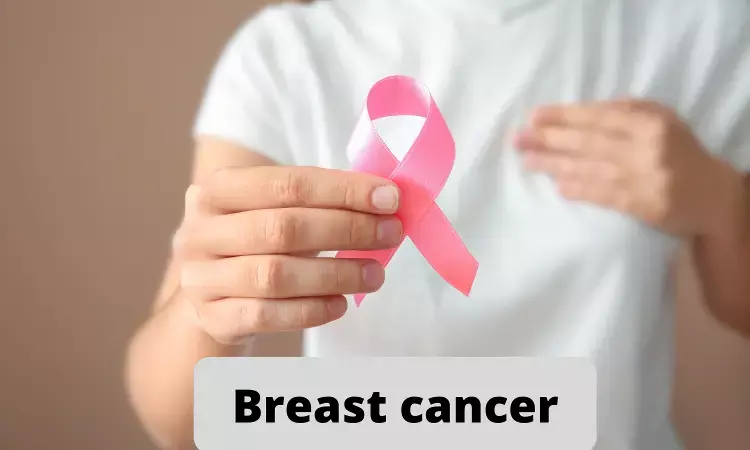- Home
- Medical news & Guidelines
- Anesthesiology
- Cardiology and CTVS
- Critical Care
- Dentistry
- Dermatology
- Diabetes and Endocrinology
- ENT
- Gastroenterology
- Medicine
- Nephrology
- Neurology
- Obstretics-Gynaecology
- Oncology
- Ophthalmology
- Orthopaedics
- Pediatrics-Neonatology
- Psychiatry
- Pulmonology
- Radiology
- Surgery
- Urology
- Laboratory Medicine
- Diet
- Nursing
- Paramedical
- Physiotherapy
- Health news
- Fact Check
- Bone Health Fact Check
- Brain Health Fact Check
- Cancer Related Fact Check
- Child Care Fact Check
- Dental and oral health fact check
- Diabetes and metabolic health fact check
- Diet and Nutrition Fact Check
- Eye and ENT Care Fact Check
- Fitness fact check
- Gut health fact check
- Heart health fact check
- Kidney health fact check
- Medical education fact check
- Men's health fact check
- Respiratory fact check
- Skin and hair care fact check
- Vaccine and Immunization fact check
- Women's health fact check
- AYUSH
- State News
- Andaman and Nicobar Islands
- Andhra Pradesh
- Arunachal Pradesh
- Assam
- Bihar
- Chandigarh
- Chattisgarh
- Dadra and Nagar Haveli
- Daman and Diu
- Delhi
- Goa
- Gujarat
- Haryana
- Himachal Pradesh
- Jammu & Kashmir
- Jharkhand
- Karnataka
- Kerala
- Ladakh
- Lakshadweep
- Madhya Pradesh
- Maharashtra
- Manipur
- Meghalaya
- Mizoram
- Nagaland
- Odisha
- Puducherry
- Punjab
- Rajasthan
- Sikkim
- Tamil Nadu
- Telangana
- Tripura
- Uttar Pradesh
- Uttrakhand
- West Bengal
- Medical Education
- Industry
Women with big breasts have safer RT in prone position than supine position; JAMA

A new study published in the Journal of American Medical Association suggests that treatment in the prone posture reduces desquamation in women undergoing adjuvant radiation who have big breasts (RT).
Women with big breasts who get adjuvant breast radiation (RT) have a significant incidence of skin toxicity. One option for reducing these harmful effects is to do breast RT in the prone position. As a result, Danny Vesprini and colleagues undertook this investigation to see how prone breast RT minimizes immediate toxic effects on the skin when compared to supine therapy.
From April 2013 to March 2018, this phase 3, single-blind, randomized, multicenter clinical study included patients from 5 sites throughout Canada to investigate the acute toxic effects of breast RT for women with big breast size (bra band 40 in and/or D cup) in the prone versus supine positions. A total of 378 individuals were referred for adjuvant RT and randomly assigned. Seven patients were eliminated from the supine position, while 14 patients were excluded from the prone position. The data was examined from April 2019 to September 2020. Patients were randomly assigned to either supine or prone RT. All patients (n = 167) got 50 Gy in 25 fractions (extended fractionation) with or without boost from April 2013 to June 2016. (range, 10-16 Gy). Following the June 2016 trial modification, the majority of patients got the hypofractionation schedule of 42.5 Gy in 16 fractions.
The key findings of this study were as follow:
1. Of the 357 women studied, 182 (51.0%) were treated supine and 175 (49.0%) were treated prone.
2. Patients treated in the supine position had statistically substantially higher desquamation than those treated in the prone position, which was supported by multivariable analysis, along with other independent covariates such as boost usage, prolonged fractionation, and bra size.
In conclusion, according to a phase III randomized experiment, breast irradiation in the prone position is less harmful than in the supine position in women with big breast size.
Reference:
Vesprini D, Davidson M, Bosnic S, et al. Effect of Supine vs Prone Breast Radiotherapy on Acute Toxic Effects of the Skin Among Women With Large Breast Size: A Randomized Clinical Trial. JAMA Oncol. Published online May 26, 2022. doi:10.1001/jamaoncol.2022.1479
Medical Dialogues consists of a team of passionate medical/scientific writers, led by doctors and healthcare researchers. Our team efforts to bring you updated and timely news about the important happenings of the medical and healthcare sector. Our editorial team can be reached at editorial@medicaldialogues.in.
Dr Kamal Kant Kohli-MBBS, DTCD- a chest specialist with more than 30 years of practice and a flair for writing clinical articles, Dr Kamal Kant Kohli joined Medical Dialogues as a Chief Editor of Medical News. Besides writing articles, as an editor, he proofreads and verifies all the medical content published on Medical Dialogues including those coming from journals, studies,medical conferences,guidelines etc. Email: drkohli@medicaldialogues.in. Contact no. 011-43720751


